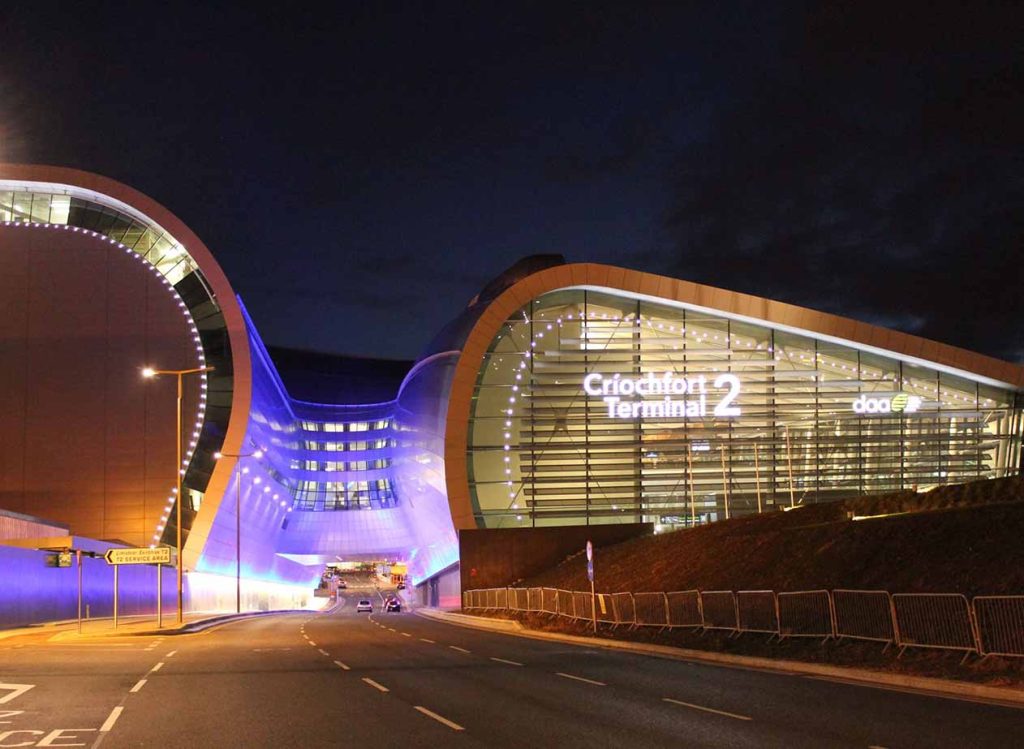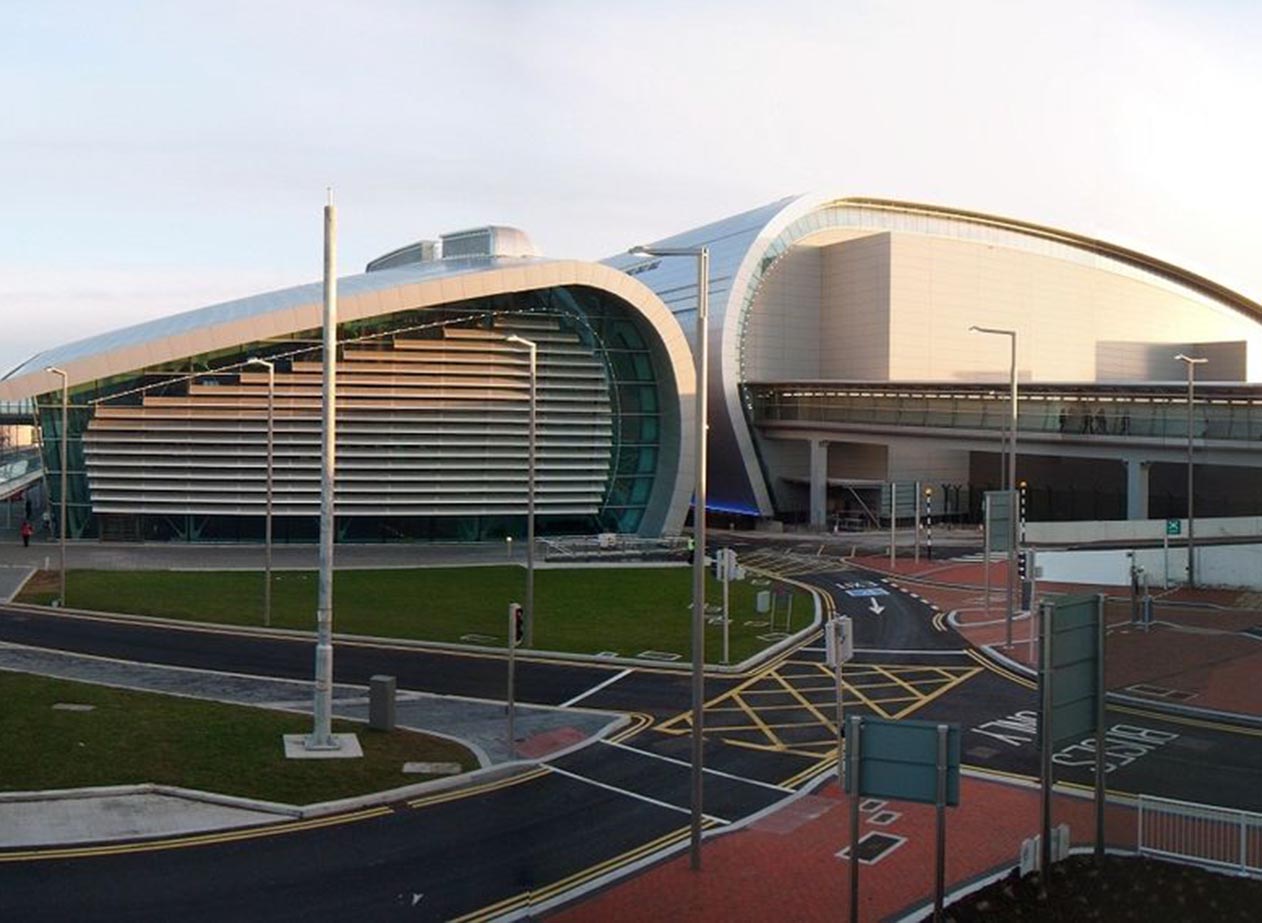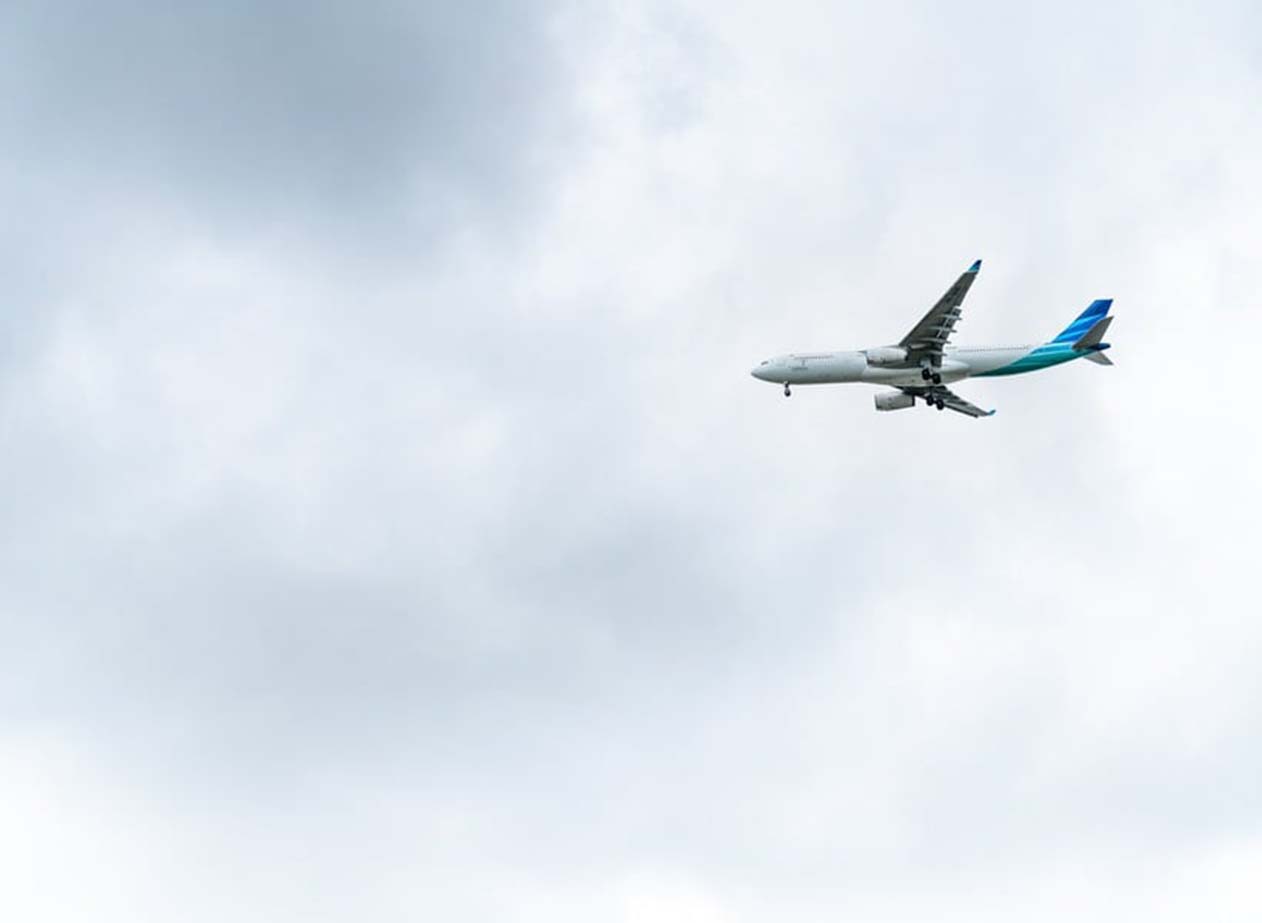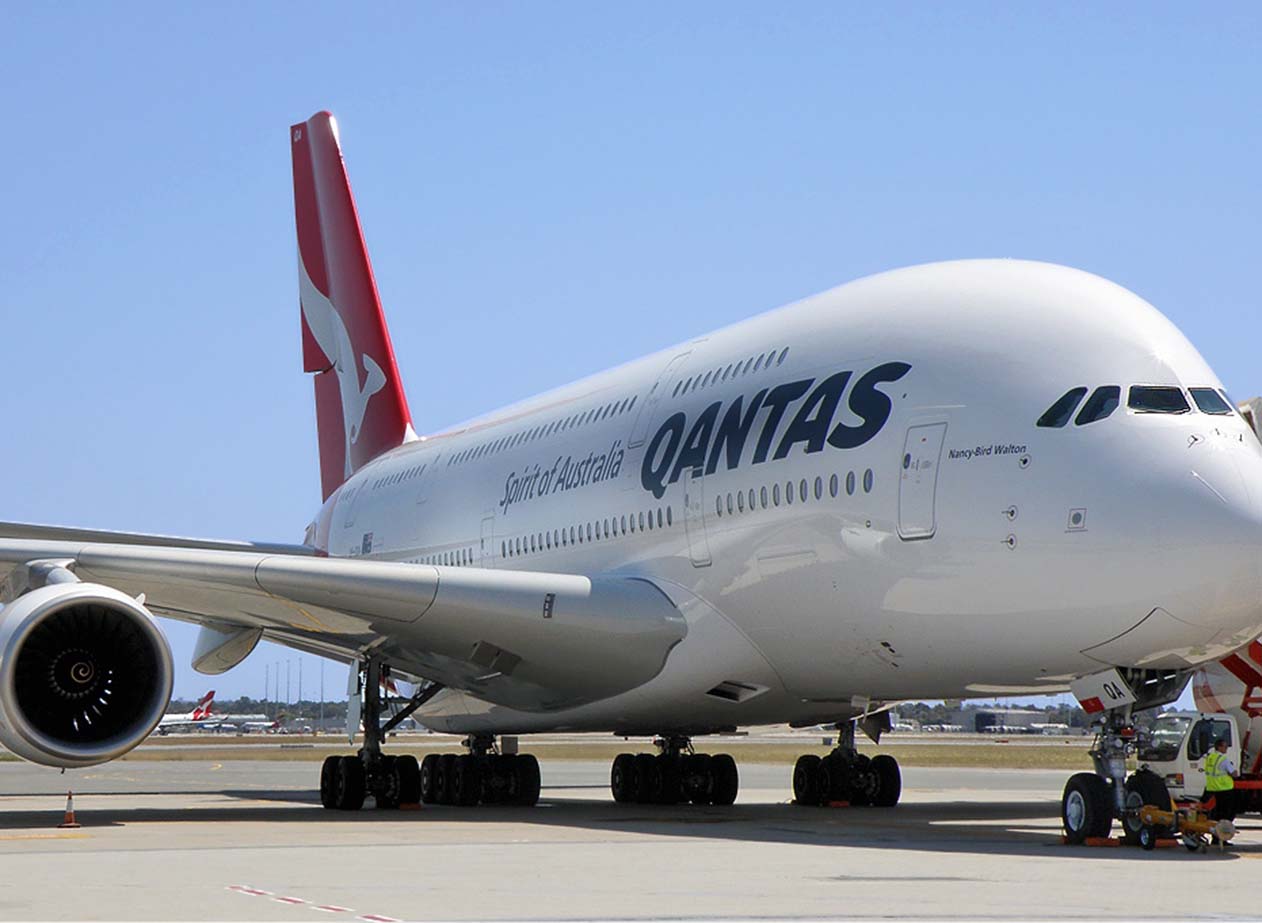When it comes to Ireland, many people think of Dublin first. This city with a Celtic soul is not only famous for its rich literary atmosphere and enthusiastic bar culture, but also one of the important air transit stations in Western Europe. However, the price of flights to Dublin is often affected by seasons, holidays, airline dynamics and booking platform pricing strategies.
Ⅰ. Dublin’s aviation gateway: basic overview you need to know
Dublin International Airport (DUB) is one of Ireland’s busiest and most important aviation hubs, with an annual passenger throughput of more than 30 million. It is located about 10 kilometers north of Dublin city center and has very convenient transportation.
Geographically, Dublin Airport plays an important bridge connecting Europe and the United States. It not only covers direct flights to major European countries, but also has direct flights to North America (such as New York, Toronto, Boston) and the Middle East (such as Dubai, Abu Dhabi, Qatar).
It is also the core operating base of many international and low-cost airlines, including Ryanair and Aer Lingus. The airport is efficient and has a wide range of flight options, making it an ideal gateway for traveling to and from Ireland and for transfers.
Currently, Dublin Airport is mainly operated by the following major airlines for medium- and short-haul routes:
Aer Lingus: Dublin’s local airline, mainly flying to Europe and the United States, providing full-service tickets, and checked baggage needs to be purchased separately.
Ryanair: A well-known low-cost airline headquartered in Ireland, with routes covering the entire Europe, known for its extremely low fares, but extra fees should be cautious.
British Airways: Transiting through London is one of the common routes to Dublin.
Luxair, Air France, KLM and other traditional airlines have also opened European connecting flights.
United Airlines, Delta, Air Canada and other North American airlines provide direct flights or transfers to Dublin from cities such as New York and Toronto.
There are two main routes to Dublin from China or East Asia:
Transit via major European hubs (such as Frankfurt, London Heathrow, Amsterdam Schiphol)
Transit via the Middle East (such as Qatar Airways via Doha, Emirates Airlines via Dubai)
Understanding the airline layout of Dublin Airport is the first step in accurate price comparison and time planning.
Ⅱ. Avoid peak periods: the first principle to save airfare
When booking Dublin flights, many people often make the mistake of “only looking at the month” and ignore the real passenger flow peak.
Mid-June to mid-August: European schools are on vacation and it is the peak tourist season.
Around St. Patrick’s Day (about a week around March 17): Ireland’s largest festival, airfares soar.
Christmas and New Year holidays (December 20 to January 3 of the following year): family reunion peak.
Easter weekend: the number of people traveling to Ireland from many European cities has increased sharply.
During European summits or major events: prices rise abnormally, especially when Dublin holds events.
Recommendations for off-peak travel:
February, mid-April, and early November: The climate is suitable, there are few tourists, and it is the most cost-effective time period.
Mid-to-late September to mid-October: After avoiding the peak summer season, the flight density remains, but the price has fallen.
Mid-week flights: Tuesday to Thursday are low-price strategy days for airlines, especially suitable for independent travelers with limited budgets.
Ⅲ. Preferred airlines: Different airlines for different needs
Choosing an airline not only affects the ticket price, but also determines the comfort of your journey, luggage policy, dining experience, etc.

1. Independent backpackers: Ryanair
Advantages: Shockingly low ticket prices, sometimes as low as 15 euros for an international flight.
Disadvantages: Baggage, seat selection, and boarding priority all require additional fees, and there are many hidden fees.
Suitable for: Light travelers with less luggage and who are not sensitive to time.
2. Family or couple travel: Aer Lingus
Advantages: Many direct flights to cities, stable flights, and high-quality services.
Disadvantages: Basic cabins still do not include checked baggage.
Suitable for: Families and couples who value service and punctuality and want to fly directly to Dublin.
3. Transfer optimization plan: Qatar Airways, Lufthansa, KLM
Advantages: Short transfer time, clear overnight arrangements, high service level.
Disadvantages: The price is slightly higher than that of low-cost airlines, but meals and luggage are included.
Suitable for: Passengers departing from China or Asia.
4. North America round-trip first choice: Delta Airlines, United Airlines
Advantages: The round-trip routes in the Americas are mature and often equipped with direct flights.
Suitable for: Those departing from the United States and Canada and who value luggage allowance and flight time.
Ⅳ. Recommendation and evaluation of trustworthy third-party booking platforms
There are many platforms on the market that provide international flight bookings. Although some platforms are cheap, their customer service support is poor and the process of changing and refunding tickets is complicated.
1. Google Flights
Purpose: Price trend analysis, find the cheapest flight day
Features: Comprehensive data, simple interface, suitable for preliminary planning.
Disadvantages: Cannot book directly, need to jump to a third-party platform.
2. Skyscanner
Advantages: Cross-platform price comparison king, covering airlines and ticket agents.
Function: Can book “any place” search, suitable for those whose journey has not yet been finalized.
Notes: Choose well-known agents, such as Expedia, Gotogate, etc. to avoid after-sales problems.
3. Expedia (Economy)
Advantages: Stable operation interface, transparent refund policy.
Advantages: There are often “combination discounts” (air tickets + hotels) that can save a lot of money.
Disadvantages: Most of them are full-price tickets, and there are fewer special tickets.

4. Kiwi.com
Highlights: Can combine different airlines into one ticket, such as Ryanair + EasyJet.
Suitable for people: Backpackers who dare to try complex transfers.
Notes: Not every trip provides connecting flight guarantees.
5. Trip.com (Ctrip International Edition)
Advantages: Chinese interface, fast customer service response.
Suitable for: non-English speaking users, especially for first-time travelers.
Reminder: Pay attention to the refund fee policy, some special tickets cannot be refunded or changed.
V. Practical tips: How to increase the success rate of grabbing low-priced tickets?
1. Set price reminders
Use Google Flights or Skyscanner to set price reminders. Once the flight price drops, you will be notified by email. Setting reminders 3 months in advance is the safest way.
2. Use VPN to switch IP addresses to compare prices
Airlines and platforms will adjust prices based on your search history and regional IP. Using VPN to switch IP to third world countries (such as Thailand and India) can sometimes see low prices.
3. Clear browser cache
If you frequently query a certain route, the system will “recognize” that you have a demand for it, and increase the price instead. Clearing the cache regularly or using incognito mode can help avoid algorithm manipulation.
4. Reverse search method
For example: the price of flying from Beijing to Dublin is high, you can search for the combination of Beijing-Frankfurt (special price) + Frankfurt-Dublin (Ryanair).
5. Make good use of student or youth ticket discounts
For example, through STA Travel, StudentUniverse, ISIC International Student Card Platform, you can find exclusive flight discounts suitable for young people aged 18-30.
VI. Guide to avoiding pitfalls about luggage and additional fees
After buying cheap tickets, hidden fees are the key.
Take Ryanair as an example. Its basic fare only includes a small carry-on backpack (such as a laptop bag or a small backpack). If you want to bring a standard cabin bag (55cm × 40cm × 20cm), you need to purchase “priority boarding” or pay for the cabin bag separately. Checked luggage varies according to the route, time and weight, and the price range ranges from 20 euros to 60 euros.
Aer Lingus’s policy is not loose either. The most basic ticket types generally do not include checked baggage, and even in some cases, standard-sized carry-on luggage also requires additional fees. Therefore, when booking, be sure to check the detailed instructions for the ticket type to avoid being notified of “oversized” and having to pay a temporary fee when boarding the plane.
Traditional airlines such as Lufthansa, KLM, and Qatar Airways still retain a free allowance of one carry-on bag and one 23 kg checked bag on most routes, which is more friendly to passengers who need to carry more items.
Practical tips:
Purchasing baggage allowance online in advance is usually about 40% cheaper than the price at the airport counter. Especially for low-cost airlines, if you find that your luggage is overweight when you arrive at the boarding gate, the temporary supplementary fee is very expensive.
If you choose not to check in your luggage, you can consider purchasing a package with the “priority boarding” option, which allows you to carry two carry-on items (a carry-on bag and a small bag), while also boarding early and avoiding the peak queue.
Pay attention to the restrictions of each airline on carry-on items: such as power banks, battery devices, alcoholic liquids, etc. Different companies have slightly different implementation standards. It is recommended to log in to the official website before departure to check the specific items to carry regulations to avoid unnecessary troubles during security checks or boarding.
A cost-effective air ticket is never as simple as the word “cheap”. The flight that is really worth booking is a reasonable price, moderate time, good service and itinerary that matches personal needs. In Dublin, a city that is both classical and modern, the saved travel expenses can also be converted into a more authentic Irish beef stew or a night of music in an old Dublin pub.



